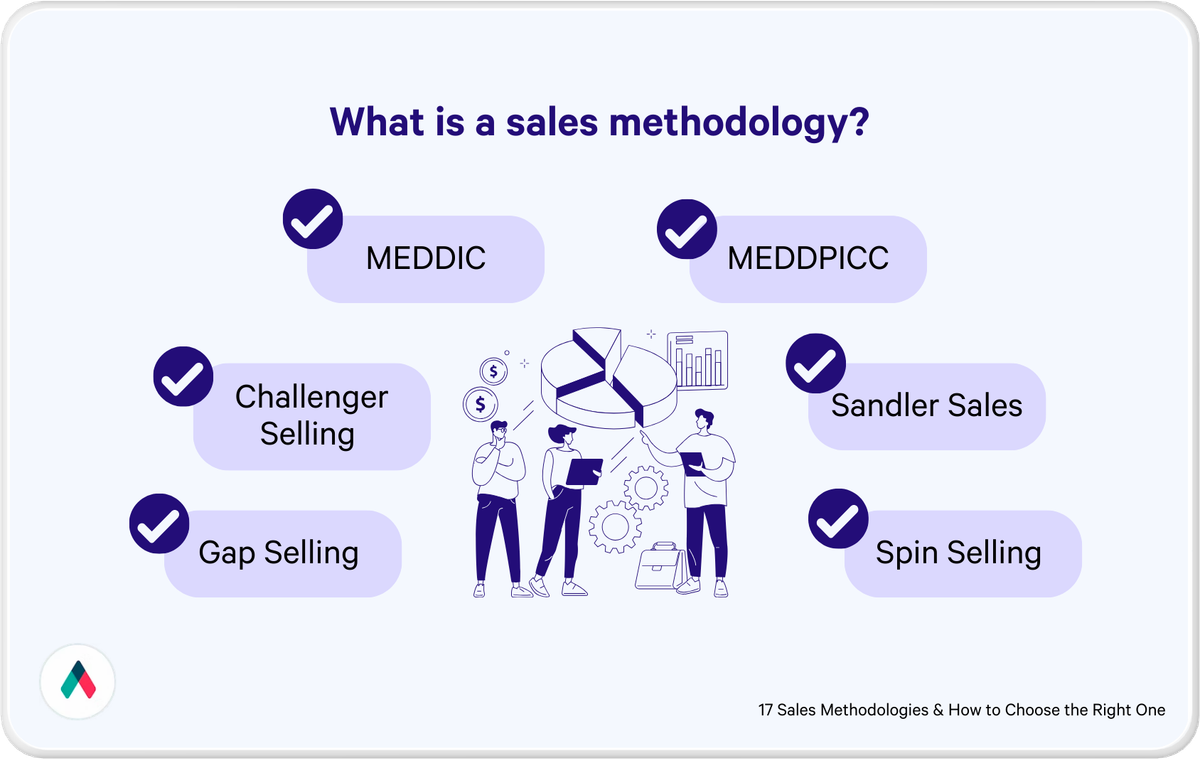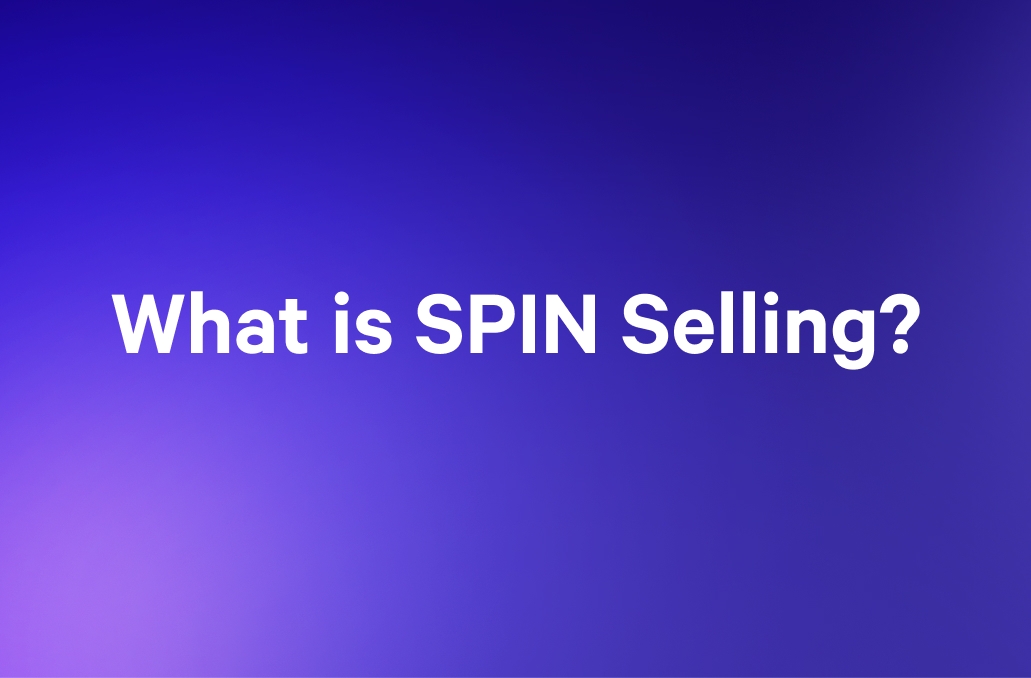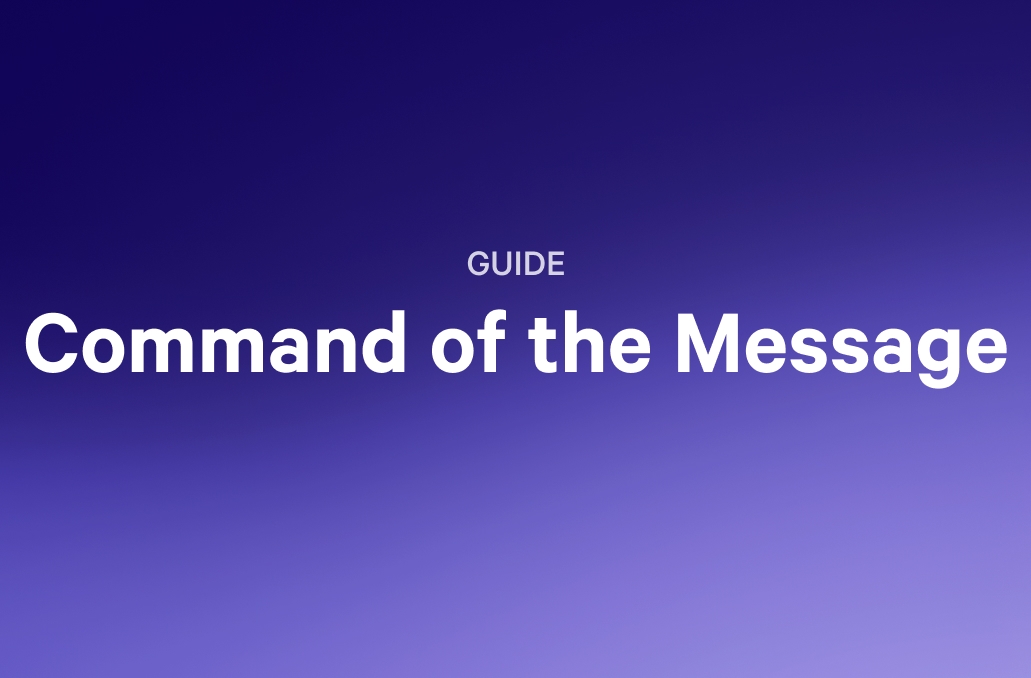"You can make more friends in two months by becoming interested in other people than you can in two years by trying to get other people interested in you."
Dale Carnegie
Dale Carnegie's "How to Win Friends and Influence People" may be a century old, but somehow, no matter how much time changes, it always seems relevant. Sure, he may not have called it "relationship selling," but showing interest in others is still one of the most powerful tools in a salesperson's arsenal.
That's particularly true in a world where budgets are getting tighter -- and people have been "sold to" for too long. we’ll look at how you can build better relationships with your prospects and clients and how it can lead to an increase in your sales volume (and quota)!
What is relationship selling?
In short, relationship selling is a sales methodology that focuses on building and nurturing solid and long-term relationships with customers. Instead of jumping straight to the pitch in your sales process, relationship selling encourages you to build rapport, pay attention to your prospect's needs and wants, and solve their problems.
Why does relationship selling matter?
In a world where every other scroll is an ad and inboxes are filled with unsolicited pitches, relationship selling can help you stand out.
By creating genuine connections and providing value, you'll earn your prospect's trust and loyalty. In a beautiful psychological paradox, relationship selling advises you not to focus on closing the deal, making people more likely to buy from you and recommend you to others.
In a nutshell, the main advantages of relationship selling include:
- Building a loyal customer base
- Differentiating yourself from competitors
- Improving your reputation
- Creating referral opportunities
Relationship selling VS transactional selling
The main difference between relationship selling and transactional selling lies in where you focus your energies as a sales rep: on the relationship with your prospect or on closing the sale.
Transactional selling tends to be a short-term and one-time transaction, where decision makers don’t need to significantly invest time or energy in making a purchase decision.
While relationship selling is more focused on fostering a more long-term partnership. This can be helpful in long sales cycles or when your product or service can be used for many years. Having long term customers who come back month after month and year after year can mean the difference between sustainable growth and going under.
This is not to say relationship selling is better or worse than transactional selling; it's about understanding what works best for your business model and adapting your approach accordingly.
There's a time and a place for both transactional and relationship selling, but nurturing client relationships can be a much more sustainable and profitable strategy.
8 key relationship selling techniques
When it comes to relationship-based sales approach, there are specific techniques you can use to connect more deeply and build strong relationships with your prospects and customers:
Do your research (and be thorough)
Want to knock your prospect's socks off right from the start? Nothing shows you care more than doing your homework. Researching their company, industry, and personal interests before conducting your initial outreach can show that you are genuinely interested in understanding their business and how you can help them.
Here are some questions you can use to guide your research process:
- What industry does this company operate in?
- Who are their main competitors?
- How is their business doing right now?
- What are some of the challenges they are facing?
- What's your prospect's role within the company?
As far as where to look for this information. Start with the company website and see if they have a bio page (or even paragraph), Google news can be a wealth of company information, and Linkedin can help you understand what they’re thinking about (or writing about).
Build rapport from the get-go
No matter if you’re selling B2B or B2C, we tend to forget we're all human beings. Building rapport is not about making small talk; it's about understanding the person you are talking to and creating a connection with them. Try to find common ground (such as mutual interests or experiences) and focus on listening more than speaking.
This might feel a little awkward on an initial sales call, but it gets easier over time.
Some questions you can ask to build rapport include. You might not want to ask some of these so directly, but draw out responses along these lines of questioning to help deepen the relationship.
- How did you get into this business?
- What is your favorite aspect of your role?
- What is the most challenging aspect of your role?
- What are your career goals?
- What do you like to do in your time away from work?
Be honest and authentic
Nobody likes a salesperson who is obviously pretending to care in order to close the deal. Be yourself, and don't be afraid to admit if you don't know something or can't help your prospect. Honesty and authenticity are key to building trust and long-lasting relationships. Don't overpromise, don't oversell, just be real — your potential customer will appreciate it more than a rehearsed sales pitch. Whatever you sell, your sales presentation should be 100% accurate to how you actually help businesses.
Personalize your communication
We all have different communication styles, and it's important to adapt yours to your prospect's preferred style. Some people prefer phone calls, others emails, texts or video conferencing. Always ask what your prospects' preferred method of communication is, and make sure you personalize your messages according to their interests and needs.
To take this a step further, look at how your prospect or customer responds to communication. Some senior leaders really like a pre-read before a meeting. They might want to show up prepared with questions instead of using the time to walk through the deck or proposal you've created.
Others might really like bullet points and brief, succinct communication that’s easy to skim and respond to — even on the go!
Show genuine interest
In relationship selling, the key is to be interested, not interesting -- so your sales meetings should revolve around your prospect and their pain points, rather than what your business can do for you.
Ask your potential customers questions about themselves, their business, and their goals. Show them you care by listening actively and following up on previous conversations.
Some examples of open-ended questions to show interest include:
- What are your long-term goals for this project?
- How do you think we can best help you reach those goals?
- What challenges have you faced in the past with similar projects?
Listen and ask questions
Again, keep reminding yourself this is about your customer, not about you (or the business you represent.) Make a conscious effort to practice active listening and ask questions that show you are engaged and interested in their needs.
Go beyond the "classic" questions and ask yourself what you would want to know if you were in their shoes. For example, you could ask:
- What are your key objectives this quarter?
- How do you measure success within your business?
- Are there any concerns or potential obstacles that may prevent you from moving forward?
- What has been your customers'/ employees'/ stakeholders'/ investors' most common complaint?
Be proactive and check in often
Your potential customer needs to know you're in their corner. Don't be afraid to reach out and check in even if there's no "update" on the deal itself.
You can use these touchpoints to share interesting articles or resources, offer your help with something you know they are working on, or simply send a personalized message every once in a while. This shows that you genuinely care and are committed to building a lasting customer relationship.
Add value to your customer's work and life
When you practice relationship selling, you don't offer value only to get something in return. You add value because you genuinely want to make a difference in your prospect's life or business. Whether by offering valuable insights, resources, or solutions to their problems, focus on how you can help them first and foremost instead of focusing on the bottom line or closing the sale. This will pay off in the long run by building trust and loyalty.
Also, remember that you should continue to offer value long after the sale is closed. By continuing to provide support and solutions, you can build an unforgettable buyer experience and turn your customers into recurring clients and advocates for your brand.
Examples of relationship selling
Relationship selling comes in many shapes and forms, but if you're looking for some examples of relationship selling for inspiration, here are a few things to consider:
Business to Business
B2B sales frequently seem cold and impersonal, but it doesn't have to be! If your business sells services or products to other businesses, you can still use the principles of relationship selling to establish trust and loyalty with your clients. For example:
- Plan for follow-up calls: At the end of a meeting with a potential client, discuss the next steps and follow up. Let them know when and how you plan to follow up and ask if that works for them. You can also use the last few minutes of your scheduled time to catch up on things outside of business. Ask about weekend plans, hobbies and interests.
- Offer valuable resources: Share articles, case studies, or webinars to help your client improve their business and overcome challenges.
- Provide a dedicated point of contact: Assign a specific sales professional or small team to each account so that clients have someone they know and trust and can reach out to directly for any questions or concerns.
Consumer products
While B2B is frequently perceived as impersonal, selling to consumers can be seen as a one-time transaction with no lasting relationship. However, customer relationship-building continues even after the purchase and can lead to brand loyalty and word-of-mouth marketing. Some examples of relationship selling for consumer products include:
- Personalized thank-you notes: After a customer makes a purchase, send them a handwritten thank-you note expressing your appreciation for their support.
- Offer loyalty programs: Create a loyalty program that rewards customers for repeat purchases, referrals, and other actions that align with your brand values. This will make them feel valued and encourage them to continue doing business with you.
- Respond promptly to inquiries: Whether it's through email or social media, make sure to respond promptly and genuinely to any questions or concerns your customers may have. This shows that you care about their satisfaction and are willing to go the extra mile for them.
Enterprise SaaS
SaaS (software as a service) is a relatively new industry, but relationship selling is just as important here as in other types of businesses. One could argue that in really competitive markets, it’s even more important. This approach can help build trust with potential customers and increase customer retention. Some ways to incorporate relationship selling into your entreprise Saas strategy include:
- Offer personalized demos: Instead of sending generic product demos to all potential customers, take the time to understand their specific needs and tailor the demo accordingly. You can do this whether you’re sharing pre-recorded demos or walking through your software live. Don't forget, you can always record your sales calls or demos to analyze them and see where you can improve and add more personalization.
- Provide excellent customer support: Offer customer support during hours when your customers need it most and resolve any issues or concerns promptly. This will show your customers that you value their satisfaction and are committed to providing a positive experience.
- Listen to feedback: Actively seek out and listen to feedback from your customers. Use this information to improve your product and show that you value their input.
Local business relationship selling
For small and local businesses, relationship selling can make a huge difference in building a loyal customer base— think of the nice lady at your local bakery or your favorite barista who knows your order by heart. Some relationship selling strategies for local businesses include:
- Build a personal connection: Take the time to get to know your customers and remember details about them, such as their names and preferences. This will make them feel valued and keep them coming back.
- Create a welcoming atmosphere: Make sure your business has a warm and welcoming ambiance— it can make a big difference in how customers perceive your brand.
- Partner with other local businesses: Collaborate with other small businesses in your area to cross-promote each other's products or services. This can help expand your customer base and build community among local businesses.
Healthcare relationship selling
Healthcare is more than a sensitive industry; it's also a heavily regulated one, making relationship selling seem more challenging. However, building strong relationships with prospects can help you better understand what they need, their target audience, and the specific help they need from you.
Focus on:
- Educating your prospects: Share educational resources, such as blogs, webinars, or seminars about the latest advancements and treatments in your field. This will show that you are knowledgeable and care about their well-being.
- Prioritizing patient satisfaction: Find ways to increase patient satisfaction across their experience. This includes everything from scheduling appointments to follow-up calls after treatment. Little things like follow up calls and messages after a procedure, clear communications, and pleasant office staff can go a long way in healthcare.
- Being transparent: Be honest and upfront about treatments, costs, and potential risks. This will help build trust with your patients and show that their well-being is your top priority.
Subscription services
When you sell subscription services (or products.), you want to make sure it's a long-term commitment. Building relationships with your subscribers is essential for retention and word-of-mouth marketing. Some relationship selling strategies for subscription services include:
- Personalized communication: Reach out to your subscribers with personalized emails or messages, addressing them by name and offering tailored recommendations based on their preferences.
- Build a community: Encourage subscribers to interact with one another, showcase their subscription boxes or products on social media, and engage with your brand. This will create a sense of community and make them feel like they are part of something special.
- Offer exclusive perks: Reward subscribers for their loyalty by offering exclusive discounts, early access to new products, or other benefits that make them feel valued. This will show that you appreciate their business and want to keep them as
What are the cons of relationship selling?
Relationship selling isn't perfect: it can take more time and effort than transactional selling, and not all customers may respond positively to this approach. Additionally, there is a risk of developing too much familiarity with customers, which can make it challenging to maintain a professional relationship.
The main takeaway
Relationship selling is not just about closing a deal -- it's about building lasting connections with customers to turn them into loyal advocates for your business.
Does it take a bit more than transactional selling?
Absolutely.
But in many situations, the effects of relationship selling are also likelier to stand the test of time.
Think of it this way: if you treat your customers well and build strong relationships with them, they will be more likely to return and continue supporting your business. And in turn, they may also spread the word about your brand to their friends and family, bringing in even more potential customers.
So don't underestimate the power of the relationship selling process. Start building relationships at a personal level and use this as a sales force that helps your customers and your business. Not all sales relationships have to feel like fleeting one-offs — especially when you want to avoid churn and having to perpetually acquire new customers.
Need help creating flexible and personalized sales materials that can be personalized based on your prospects and customers’ wants and needs? If your sales strategy involves sharing a lot of information with your prospects in an easily digestible way, Qwilr's proposal software can help you create collateral and proposals that can be easily customized - saving sales teams a lot of time that can be used to meet with prospects. Want to see it in action? Book a demo or take advantage of a 14-day free trial to see for yourself.
About the author

Brendan Connaughton|Head of Growth Marketing
Brendan heads up growth marketing and demand generation at Qwilr, overseeing performance marketing, SEO, and lifecycle initiatives. Brendan has been instrumental in developing go-to-market functions for a number of high-growth startups and challenger brands.



